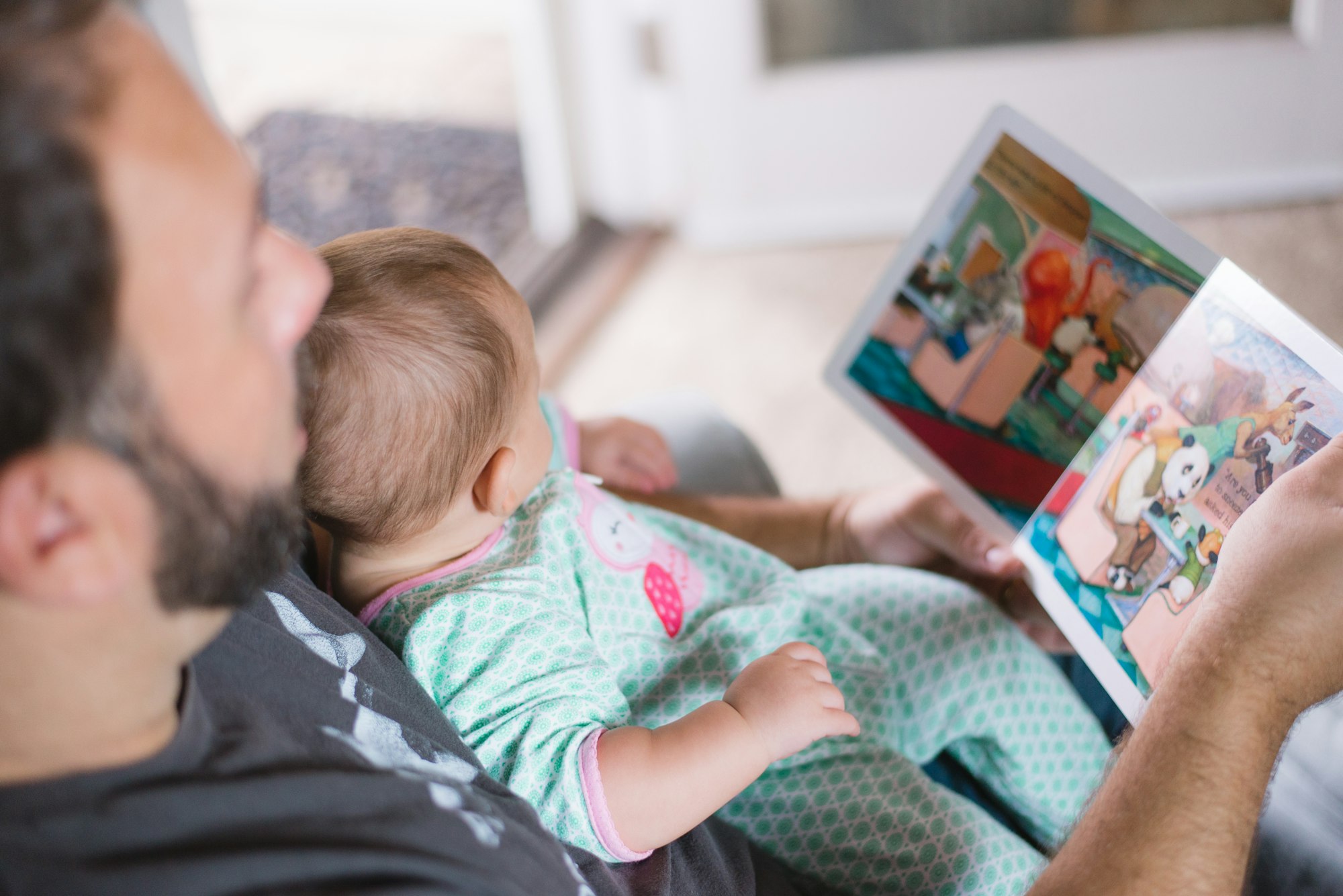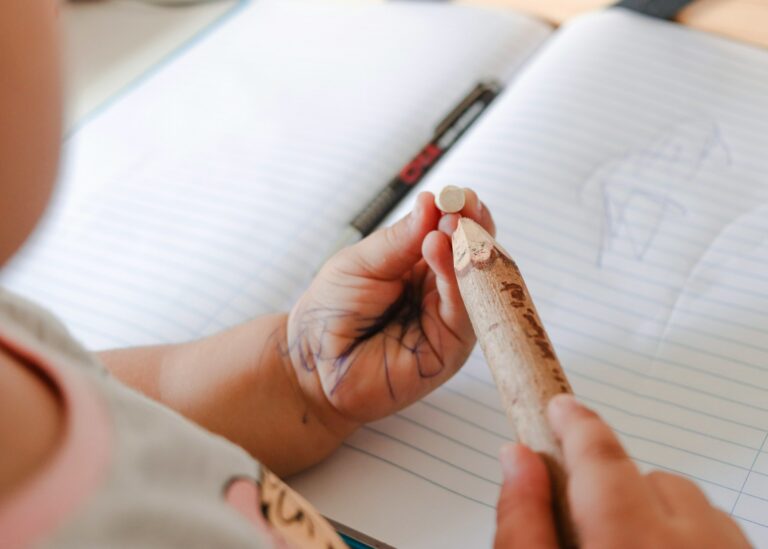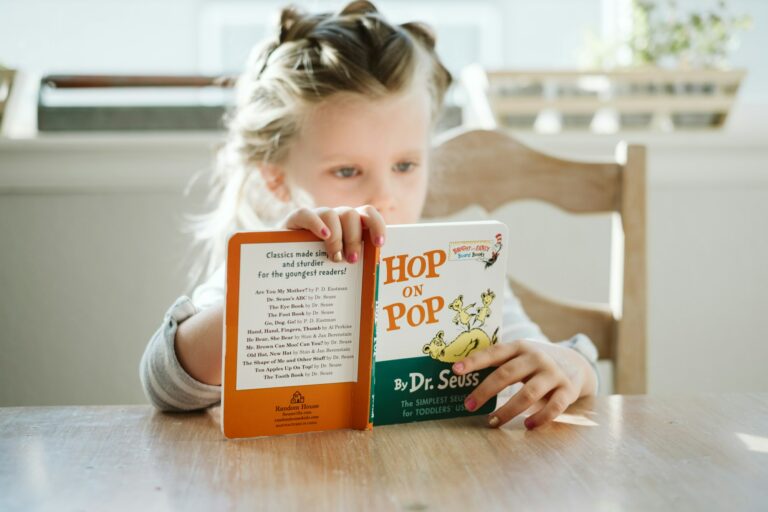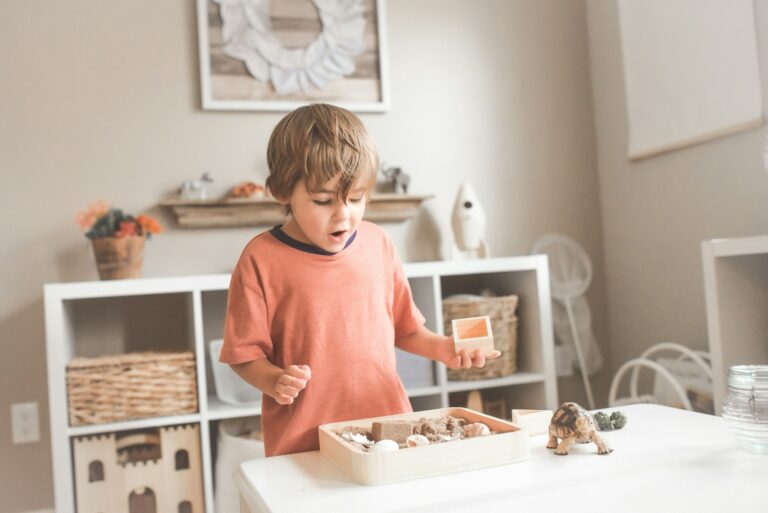Language is so much more than just words—it’s the gentle thrill of hearing your child call you “mama” for the first time or that gripping suspense when they try to narrate a story about the cat under the bed. For many parents, questions simmer quietly: Is my child speaking enough? Are those babbles on track? Should there be more words now, fewer grunts? These concerns are shared by countless families eager to help child develop language. Language, as you will discover, flourishes not in silence, nor in hurried correcting, but in bursts of song, laughter, attentive pauses, and slow, mindful exchanges.
Daily life often becomes a whirlwind, making space for intentional talk sometimes seem daunting. Still, weaving simple, meaningful interaction into routines—the familiar jangle of pots in the kitchen, a stray bird outside the window, a bedtime picture book—can truly help child develop language. Let’s explore, step by step, how parents can nurture this journey towards confident expression, unravelling the science and practical tips alike. Expect to discover both immediate solutions and deeper explanations, from medical insights into speech and hearing development to the subtle role of multilingual exposure. Because each word your child learns becomes a building block—a tiny triumph for both of you.
Understanding How to Help Child Develop Language
Language development is an astonishing process. From the first spontaneous coo to intricate sentences at age five, children absorb and test sounds, decipher connections, and eventually build stories. What, precisely, is happening under the surface? Speech refers to the mechanical production of sounds, shaped by the mouth, tongue, and voice box. Language is more complex—an intricate system, including vocabulary, the order in which words are strung, and even the social dance of turn-taking. Phonetics is about identifying and reproducing sounds, semantics revolves around meanings, syntax and morphology assemble words into logical sentences, while pragmatics teach your child how to use language for friendship, storytelling, asking (endless!) questions, and sharing feelings.
Children aren’t born with language, but their brains are primed to learn it at astonishing speed. And it’s not just about repeating words—it’s about connecting meaning, feeling, and context. Here’s a thoughtful aside: Did you know the brain’s “language windows” are most open in the early years? The more you expose your little one to rich interaction, the sturdier those neural connections.
The Power of Interaction: Everyday Moments to Help Child Develop Language
Speaking with Your Child
Even when your child is tiny, tangled in blankets, listening to your heartbeat, every word spoken is an opportunity to help child develop language. It might seem odd at first, but narrate what you’re doing: “Now we’re putting on your blue socks. The blue ones match your t-shirt.” This is not just filler talk—every phrase gives structure and new vocabulary. When your child babbles or points, respond directly. If you catch a smile or an intent look, translate that nonverbal cue into speech: “You’re watching the fan! Does it look interesting?” Over time, these mini-conversations stitch a foundation for robust, flexible communication.
Describe daily actions, objects, and emotions, inviting your child into the conversation. Small children thrive on repetition and routine: “First, we brush your teeth, then we read ‘The Hungry Caterpillar.’” As their vocabulary blossoms, comment on what they explore—“You want the red ball? Here it comes!”
Listening and Reciprocity
The science of communication isn’t one-sided. Babies, even before speaking, send signals—tiny cries, stretches, or sidelong glances. Respond with patience, even to their smallest attempts. Echo their sounds (“ba-ba-ba!”), make direct eye contact, and offer gentle responses. This reciprocal melody encourages your child to keep experimenting with sound and meaning. When they move to early words—perhaps “milk” or “dada”—pause, listen, and invite elaboration with questions: “You want milk? Cold or warm?” By holding space for their efforts, you help child develop language at their own rhythm.
Naming, Gestures, and Rich Input
Pointing out objects, animals, family members, and naming them aloud brings words and ideas to life. Show a toy and say, “This is your teddy bear!” Pairing words with gestures or simple signs, like waving “bye-bye,” gives children two channels for learning: visual and auditory. Medical studies confirm that supportive gestures never delay speech—rather, they soften frustration and encourage spoken language acquisition.
Stages and Milestones in Language Growth
Language grows in fascinating waves.
- Birth to 12 months: Cooing, babbling, first gestures, and understanding simple words—such as their name.
- 1–2 years: Rapid acquisition of vocabulary—often 50–150 words, plus early two-word sentences. They grasp basic requests, like “Come here!”
- 2–3 years: Expansion of both word count and grammar, with children asking simple questions and combining phrases.
- 3–5 years: Language becomes clearer and more flexible: storytelling, asking “why,” retelling daily events, and following multi-step instructions.
Rough edges or variations are part of the process, but persistent difficulty combining words, or comprehending instructions, is worth discussing with your medical provider.
Reading, Songs, and the Art of Play
Every shared story or rhyme is a ladder, helping child develop language step by step. Books widen a child’s world: colors, animals, faraway places, and feelings all tumble from those pages. Even family photos become talking points: “Who is this? What are they doing?” Reading aloud stimulates memory, curiosity, and attachment.
Songs, especially with claps or gestures (think: “Wheels on the Bus”), blend words with rhythm and movement. Older children adore word games and riddles—the playful challenge of a tongue-twister, or spotting rhymes during a car ride, strengthens both vocabulary and listening.
Everyday Situations: Invisible Classrooms for Language
The world outside your window is full of occasions to help child develop language. In the grocery store, ask about colors, “Which apple is redder?” In the kitchen, narrate simple sequences: “Peel, chop, and stir.” On a walk, encourage naming and asking: “Can you hear the crow? Where does it sit?” Mealtimes often become warm arenas for laughter, stories, and sharing emotions—no extra effort needed.
Quality Interaction: More than Just Words
Medical research consistently highlights what matters most: quality over quantity. It isn’t about talking endlessly, but about focused, reciprocal exchanges. Observe quietly, wait for their response, allow silences. Engage in gentle touch—hugs, holding, playful taps. These micro-moments build security, trust, and ultimately a more eager language learner.
Screens and Early Communication
You see them everywhere—smartphones glowing with cartoons, “learning” apps that promise instant improvement. However, before age three, a child’s brain literally processes digital information differently from real-life experiences. Too much screen time can reduce a toddler’s effort to look up, listen, or decipher emotions in your voice or face. To truly help child develop language, prioritise face-to-face conversation, shared play, and reading. Consider digital tools later, and always as a supplement, not a substitute.
What Shapes Language: Genetics, Hearing, and Multilingual Homes
Some children may have a family background of late talking or speech concerns. Genetics plays a role, as do environmental cues—a busy, engaged home feeds curiosity and learning. Hearing loss, chronic ear infections, or oral-motor challenges can quietly interfere with speech. Watch for less clear speech, limited response to sounds, or trouble with words. In multilingual homes, mild delays in one language may appear, but overall, this exposure enriches cognitive skills and never causes “confusion.”
Warning Signs: When to Seek Guidance
Prompt attention may be needed if a child:
- Doesn’t use recognizable words by 18 months,
- Has a much smaller vocabulary than peers,
- Struggles to combine words after age two,
- Remains hard to understand after age two,
- Shows little interest in books or social games,
- Has trouble following simple requests.
Discussion with a pediatrician or speech-language pathologist (SLP) can provide assessments, therapies, and early intervention. Early support often leads to better outcomes.
Types of Delays and What They Mean
- Articulation difficulties: Substituting sounds (“wabbit” for “rabbit”).
- Phonological issues: Consistent error patterns (“tat” for “cat”).
- Expressive language challenges: Short sentences, trouble expressing ideas.
- Receptive difficulties: Problems understanding instructions.
- Childhood apraxia of speech: Struggle with the muscle planning needed for speech.
- Stuttering: Pauses, repetitions, blocks during conversation.
Every diagnosis comes with its own management strategies, often centered on parent participation, specialised games, and gentle exercises.
Creating a Language-Rich Environment at Home
Imagine baskets filled with stories, cards marked with animal names, walls brightened by simple picture charts—these are the invisible scaffolds that help child develop language. Set up a cozy, well-lit place for books and toys. Offer a variety of objects—soft toys, blocks, and puzzle pictures—to encourage storytelling and exploration.
Let your child choose activities. When you ask, avoid yes-or-no: “Would you prefer this blue block or the yellow one?” Letting them lead fosters choice, independence, and complex expression. Celebrate every attempt, no matter how imperfect.
Parents and Caregivers: Everyday Role Models
To help child develop language, every spoken word matters. Speak slowly and clearly, use specific vocabulary, and expand on your child’s speech—they say “car,” you say “Yes, the red car is fast!” Gently model correct sentences, rather than explicit correction. Talk about emotions: “You’re frustrated—shall we try again?” Group play—or even sibling quarrels—train social language skills and problem solving.
For families navigating two or more languages, consistency is key. Mix languages if it feels natural, but keep exposure active in both. Celebrate progress in every tongue—assess skills across the languages, not just one.
Accessible Support: Where to Turn
Speech-language pathologists (SLPs) are invaluable allies. They offer assessment, tailored therapy—including play-based methods—and guide parents on effective home strategies. Early check-ins, especially if you notice red flags, make a significant difference.
Technology can have a place—when used thoughtfully. Seek interactive games and quality content, involve yourself in your child’s digital exploration, and remember to connect each new word to real-world experience.
Bring in grandparents, cousins, friends! Each person who speaks, sings, or shares a story with your child helps build a richer language tapestry. Join community reading groups, attend children’s events, and introduce varied accents and social contexts. The more encounters, the more flexible your child’s language skills become.
Key Takeaways
- Attentive, everyday interactions—speaking, listening, reading, and singing—build language from the ground up.
- Focus on reciprocity and allow pauses; quality exchanges are more impactful than pure repetition.
- Everyday contexts—shopping, cooking, walks—become powerful stages to help child develop language.
- Avoid screen exposure before age three; opt for shared play and storytelling.
- Watch for signs of delay; early support from medical professionals is highly effective.
- Family and community support multiply learning opportunities: every voice counts.
- Celebrate every new word, every story—each proof that with care and time, you really help child develop language.
For parents seeking tailored advice, screening tools, or just reassurance on the journey, application Heloa offers reliable questionnaires and easy-to-follow guidance. The right resources do make a difference.
Questions Parents Ask
How do I encourage my quiet child to speak more?
Some children naturally observe more before joining in. Spark gentle opportunities: describe actions as you do them, invite choices (“Do you want dal or rice?”), and praise even the smallest effort. Play singing games, do imitation activities, and browse picture books together. Avoid pushing; patience paired with steady encouragement works wonders.
Which activities are best to help child develop language at home?
There’s magic in routine. Read storybooks, invent tales, create rhymes at bedtime, and make naming games during baths or walks. Simple puppet shows, spotting and naming things around the home, and asking your child to help with easy recipes—these playful scenarios keep language learning alive and enjoyable.
When should I seek support for my child’s speech or language?
Progress can vary, but it’s wise to consult a speech-language pathologist if your child rarely tries to communicate, struggles to follow everyday instructions, or their spoken words remain unclear compared to other children nearby. Medical professionals provide supportive, positive strategies tailored for each child—it’s a step towards strengthening your child’s unique journey.









